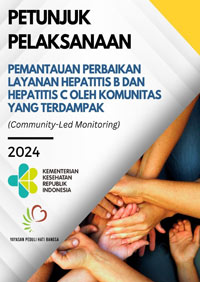Improving Viral Hepatitis Care in Indonesia
Indicators developed by Peduli Hati Bangsa and TREAT Asia’s community-led monitoring in Asia project will be implemented nationwide

Community-led monitoring (CLM) enables communities and care recipients to collect data about healthcare and support services that can help facility managers and providers improve the quality, accessibility, and effectiveness of care.
Ultimately, this person-centered approach to healthcare delivery aims to aid governments and other providers tailor existing services to site-specific needs and fill gaps in services systemwide.

Now the Indonesian government has incorporated one community group’s approach to monitor hepatitis B and C services in its national implementation guidelines.
The Indonesian Ministry of Health, in collaboration with Yayasan Peduli Hati Bangsa, Jakarta, has adopted the program indicators measuring hepatitis B and hepatitis C care delivery that were developed through amfAR’s TREAT Asia program’s CLM in Asia project for its recently published “Implementation guidelines for community-led monitoring (CLM) of hepatitis B and C services in Indonesia.” Peduli Hati Bangsa helped to develop these indicators and have been advocating for their broader uptake in the country.
The hepatitis indicators include assessments of services such as access to screening and diagnosis, treatment, and treatment monitoring, as well as access to vaccination against hepatitis B. Implementation of the guidelines is proposed as part of the 2025–2029 National Viral Hepatitis Action Plan.

“This is the first adoption of indicators on hepatitis B and hepatitis C by the Ministry of Health in Indonesia. In fact, the first globally,” notes Caroline Thomas of Yayasan Peduli Hati Bangsa. The Implementation Guidelines were disseminated in mid-June to all Provincial Health Offices across Indonesia, she adds.
The Asia-Pacific region is especially hard hit by chronic viral hepatitis, bearing 62% of the global burden of hepatitis B and 32% of hepatitis C. In Indonesia, 18.9 million people are living with chronic hepatitis B or hepatitis C.
With the guidelines distributed to stakeholders, civil society, and key population groups, the work of implementing them will begin. “We recognize this is just an initial gain—a first step in several steps to follow,” says Giten Khwairakpam, Program Manager, Community and Policy, TREAT Asia, who leads the project and assist the national partners in its implementation. “Such uptake by national government and recognizing community-led efforts is encouraging!”
For more information about amfAR’s TREAT Asia program’s CLM in Asia project, which is also implemented by the Community Network for Empowerment (CoNE) in Manipur and the Delhi Network of Positive people (DNP+) in India, click here.
Share This:
